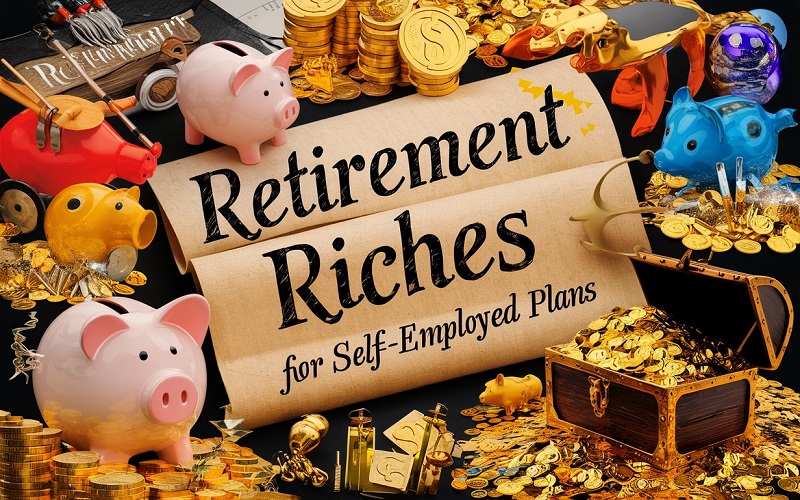
Financial Planning Goals for Businesses: The Ultimate Guide to Transforming Dreams into Reality
November 23, 2023
Beyond the Business: Exploring Different Investment Options for Entrepreneurial Success
December 7, 2023Retirement Planning Challenges for Small Business Owners
Small business owners face unique challenges when it comes to saving and preparing for retirement. Unlike those who work for larger companies, small business owners rarely have access to employer-sponsored retirement plans. The responsibility falls entirely on the business owner to set up and fund their own retirement accounts.
Setting Up Retirement Accounts
Small business owners have several options when it comes to setting up retirement savings accounts. Some top choices include:
- Individual 401(k) Plans – These operate like a traditional 401(k) but are designed for sole proprietors or businesses with no other employees. They offer high contribution limits.
- SEP IRAs – Simplified Employee Pension Individual Retirement Account. Easy to set up and contributions are tax deductible.
- SIMPLE IRAs – Savings Incentive Match Plan for Employees. Can be set up if you have 100 or fewer employees.
- Solo 401(k) Plans – A one participant 401(k) plan with higher contribution limits than SEP or SIMPLE IRAs.
When deciding which account to establish, consider factors like:
- Contribution limits
- Administrative costs
- Tax implications
- Accessibility of funds
Choosing the ideal retirement account for your small business is key to maximizing savings.
Funding Retirement Accounts
Once you’ve established retirement accounts for your small business, it’s essential to consistently fund them. Some tips:
- Contribute the maximum amount allowed each year to accelerate growth
- Take advantage of “catch-up” contributions if age 50 or older
- Use tax deductions available through most retirement plans
Consistent contributions to retirement plans over decades results in significant tax-advantaged savings and compound growth.
Investing Retirement Funds
To grow retirement assets most effectively, small business owners need to invest account funds using an appropriate asset allocation strategy and selecting prudent investments. Consider:
- Work with a fee-only financial advisor to implement an prudent investment strategy tailored to your retirement timeframe and risk tolerance
- Use a diversified mix of stocks and bonds. More stocks when younger, gradually shifting to more conservative bonds closer to retirement.
- Leverage target date funds if you prefer a hands-off approach. They automatically adjust asset allocation for you over time.
Smarter investing of retirement dollars can result in greater wealth accumulation.
Tax Planning for Retirement
Once retirement assets grow later in life, small business owners need strategic tax planning to optimize withdrawals. Consider moves like:
- Withdrawing funds from taxable accounts first to allow continued tax-deferred growth in retirement accounts
- Exploring Roth IRA conversions during low-income years to create a source of tax-free income later
- Holding bonds in tax-deferred accounts while keeping stock funds in Roth accounts
Proactive tax planning around qualified retirement accounts can help maximize after-tax income during the retirement years.

Transitioning Business Ownership
For small business owners, retirement also requires laying the groundwork to transition away from the business itself. Important steps include:
- Creating a business succession plan detailing how management and ownership will transfer
- Identifying and grooming a successor from within or bringing in your child/family member
- Working with a business broker or investment bank to sell the business
- Planning a gradual exit by bringing in partners and reducing working hours over time
Handling the transition wisely gives small business owners the flexibility to step away from their life’s work.
Drawing Down Assets in Retirement
When small business owners finally do leave their companies, thoughtful strategies must be implemented to generate sustainable retirement income. Items to consider:
- Build a retirement paycheck by tapping various income sources in moderation
- Be aware of Required Minimum Distributions (RMDs) from retirement accounts after age 72
- Limit portfolio withdrawals to a “safe rate” like 4-5% to prevent depletion
Creating retirement cash flow from assets requires both planning and discipline for business owners.
Additional Retirement Planning Considerations for Small Business Owners
Managing Healthcare
- Research Medicare rules around age 65
- Consider supplemental plans to cover gaps
- Budget for increased healthcare costs
- Maintain health through diet, exercise, checkups
Managing healthcare costs in retirement takes both understanding programs like Medicare and consciously budgeting additional funds to handle expenses.

Claiming Social Security
- Research approach that maximizes lifetime Social Security benefits
- Factor spouse’s benefits into decision making
- Be aware of earnings limits if collecting benefits while still working
- Model different claiming ages and strategies
Optimal Social Security claiming age and strategy depends on personal health outlook and spousal considerations.
Relocating
- Consider lower cost of living areas or states without income taxes
- Weigh benefits of warmer climates and retirement communities
- Factor proximity to children and grandchildren
Many retirees relocate to optimize finances, weather, health and connections with family/friends.
FAQs
Q: What are the contribution limits for retirement accounts?
A: Contribution limits vary by account type but are generally $20,500 plus an extra $6,500 “catch up” contribution if over 50. Solo 401(k) plans have higher limits.
Q: Should I rollover retirement plans when I sell my business?
A: It can make sense to rollover any business-sponsored retirement accounts like 401(k)s when transitioning away from running the company to maintain tax-advantaged status.
Q: What retirement withdrawal rate should I use?
A: Most experts suggest capping annual portfolio withdrawals at 4-5% of assets to prevent depletion over 30+ year retirements.
Q: Where is the best place to retire cheaply overseas?
A: Top overseas retirement destinations for Americans include Mexico, Costa Rica, Portugal and Spain due to warm weather, low costs and established expat communities.
Q: What expenses drop in retirement?
A: Generally expenses like commuting costs, professional clothing costs, child and elder care costs decrease or are eliminated upon full retirement.
Conclusion
Advanced planning around retirement accounts, investments, taxes, healthcare, Social Security and relocation lead to better financial outcomes for small business owners in their later years. Working with a fee-only financial advisor brings additional experience and accountability. While running a business brings rewarding challenges, prioritizing retirement readiness brings comfort.



